FA18-CVE-070: Water Supply Network Simulation using EPANET Software
VerifiedAdded on 2021/05/25
|50
|2872
|361
Presentation
AI Summary
This presentation, created by Haseeb Ullah Khan (FA18-CVE-070), provides a comprehensive overview of water supply network simulation and distribution using EPANET software. It begins by explaining the necessity of water supply simulations and the factors to consider before, during, and after simulation. The presentation then introduces EPANET, its capabilities in modeling hydraulic and water quality behavior within pressurized pipe networks, and its limitations. It details essential parameters such as elevation, pressure, velocity, and water demand, along with key principles like the equation of continuity and friction loss formulas (Darcy-Weisbach and Hazen-Williams). The presentation also covers the components of a water network including junctions, reservoirs, tanks, pipes, pumps, and valves. Design considerations for branched and looped networks are also discussed. The presentation concludes with a practical example, demonstrating how to develop a simple water supply network in EPANET, including the input of necessary data like borehole yield, pump performance, and demand information. It guides users through the process of drawing the network, setting parameters, and running analyses, providing insights into the design of a water distribution system.
1 out of 50
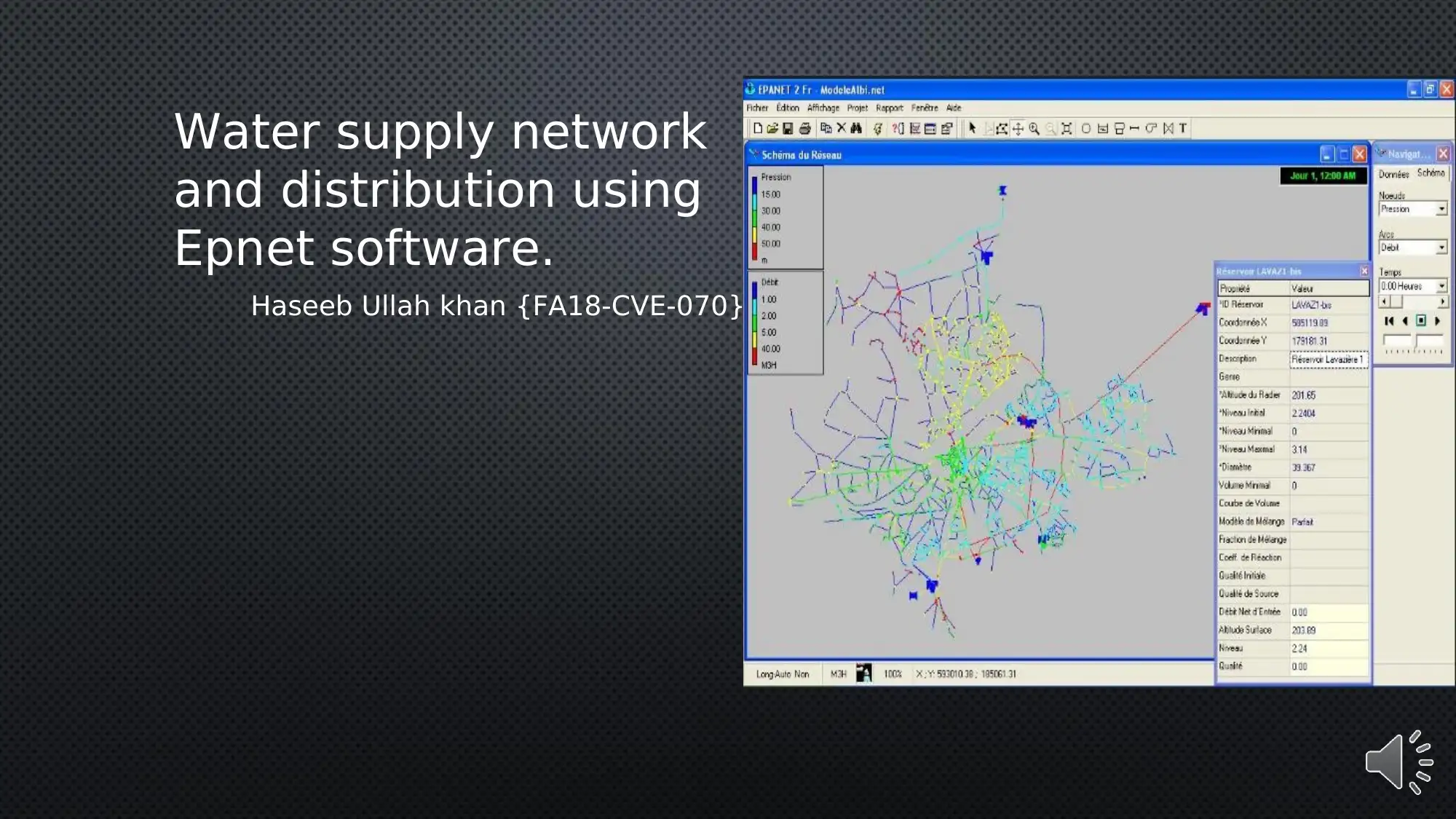
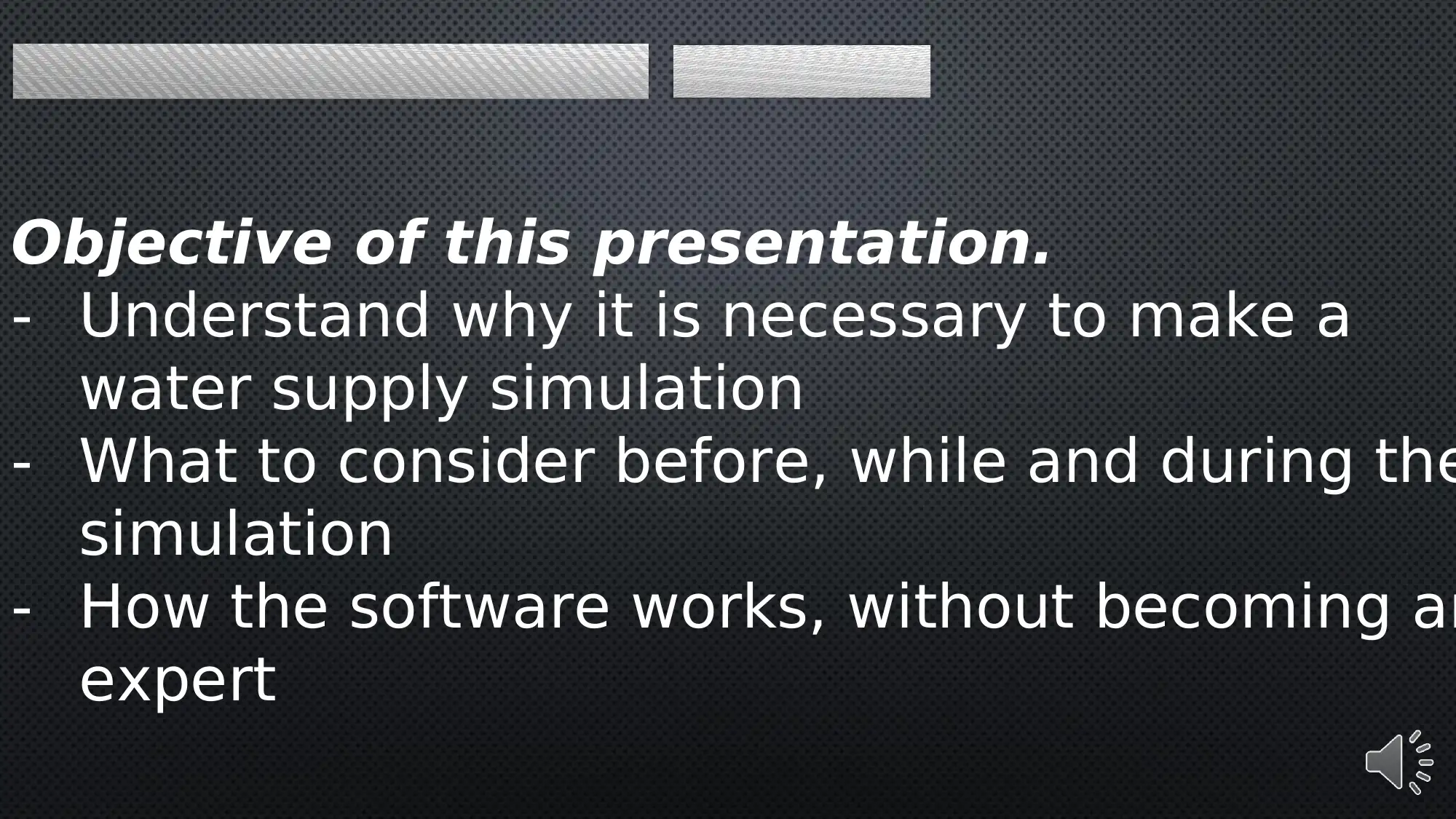
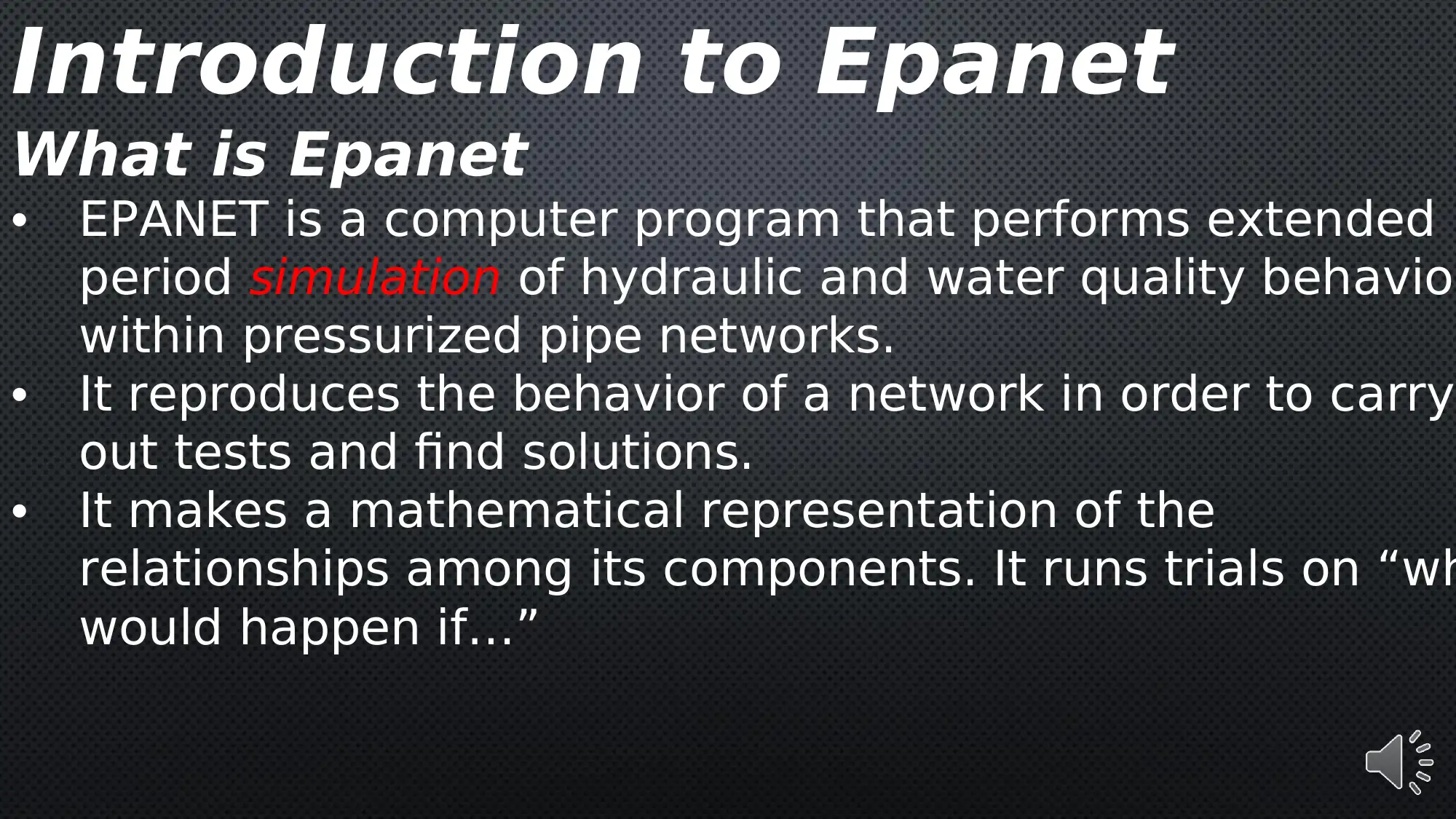

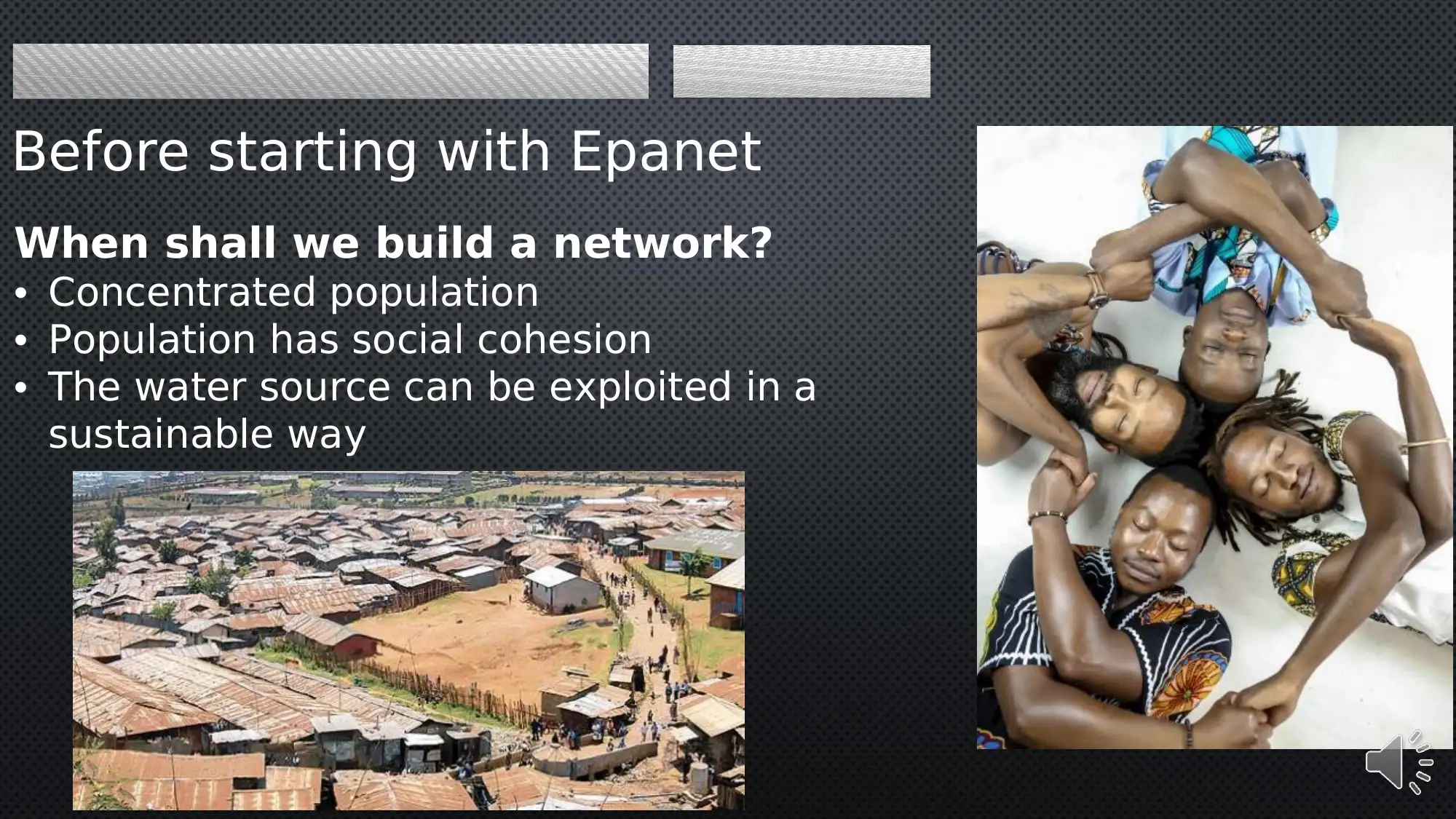
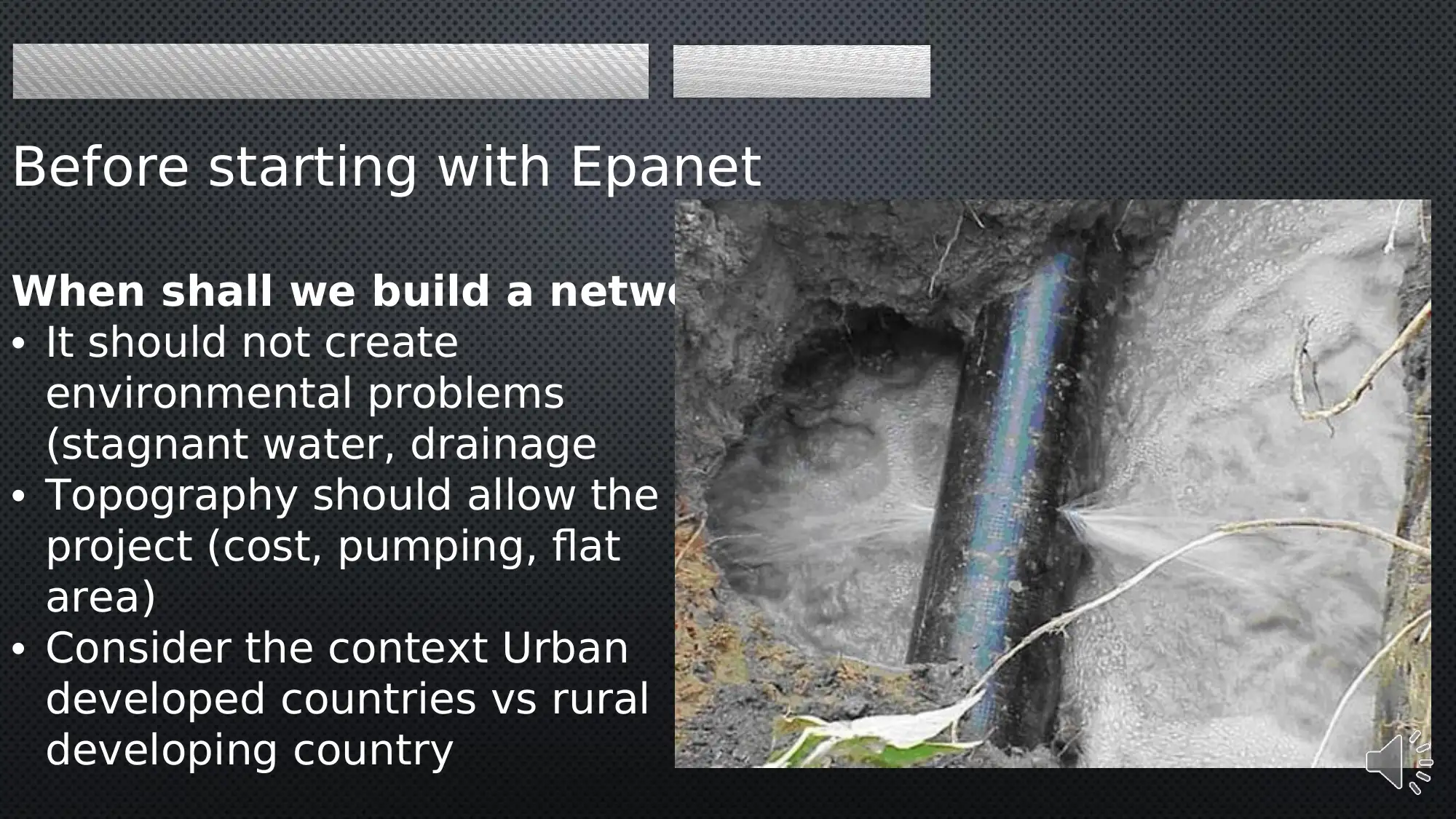

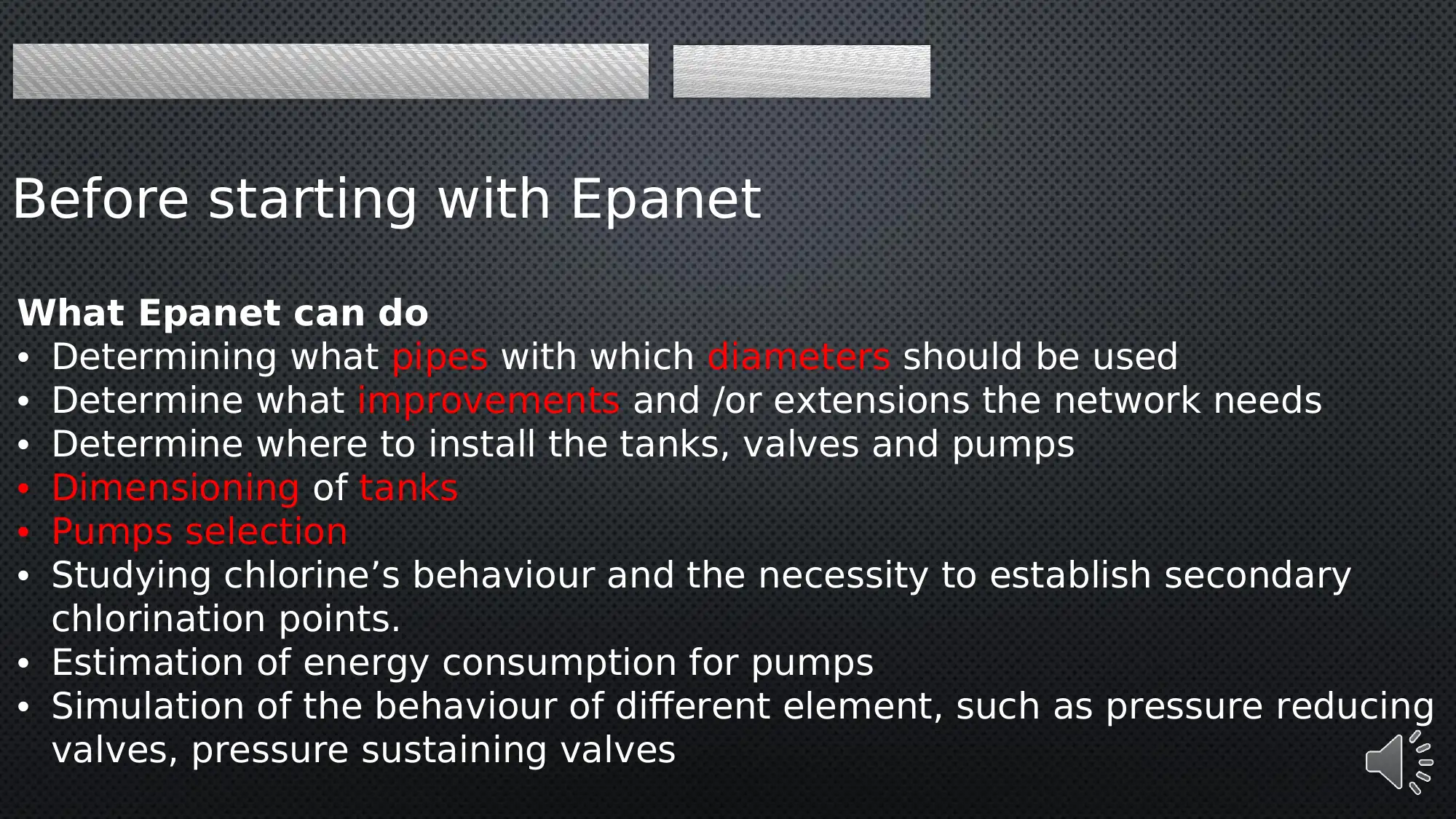

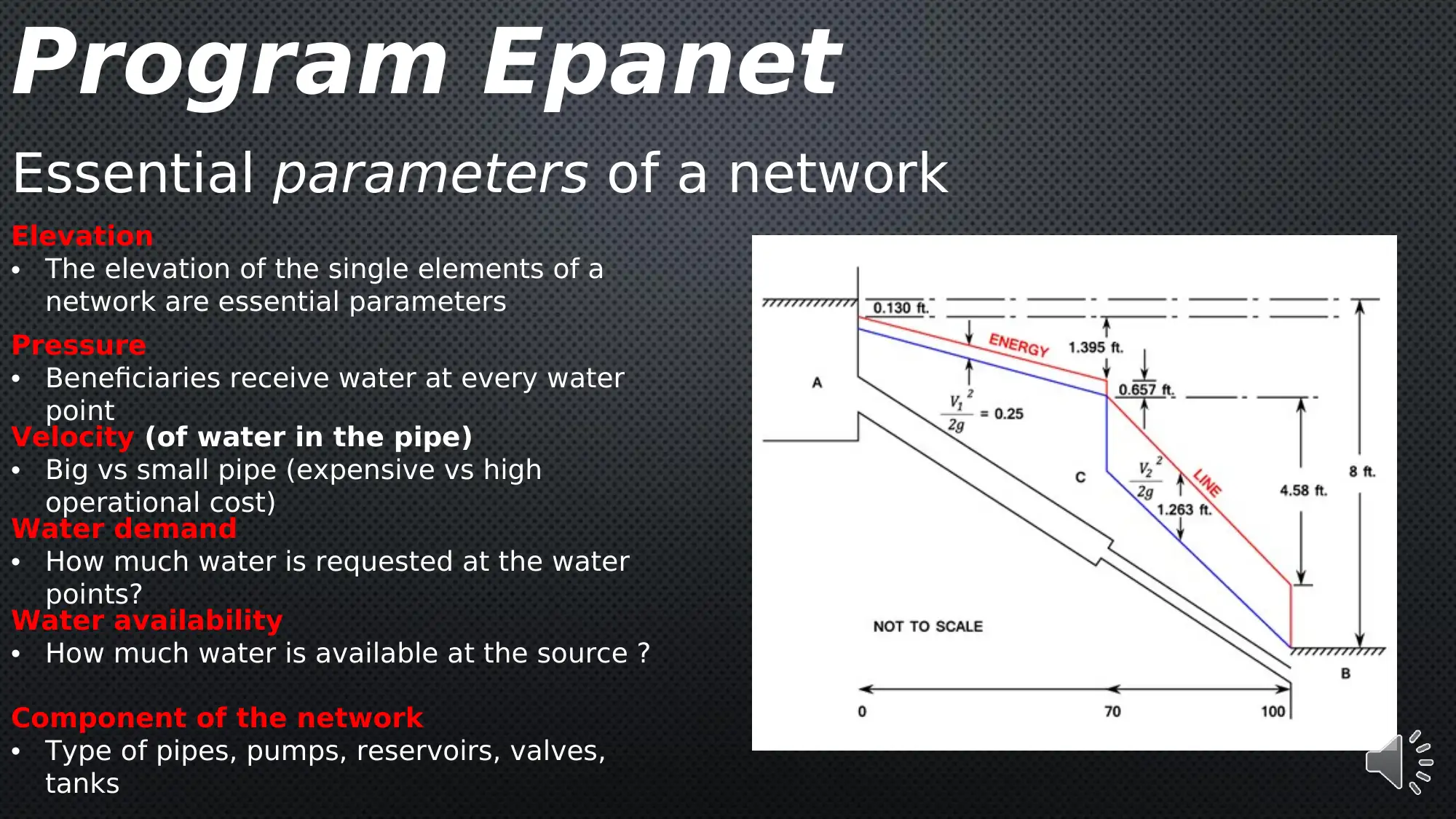
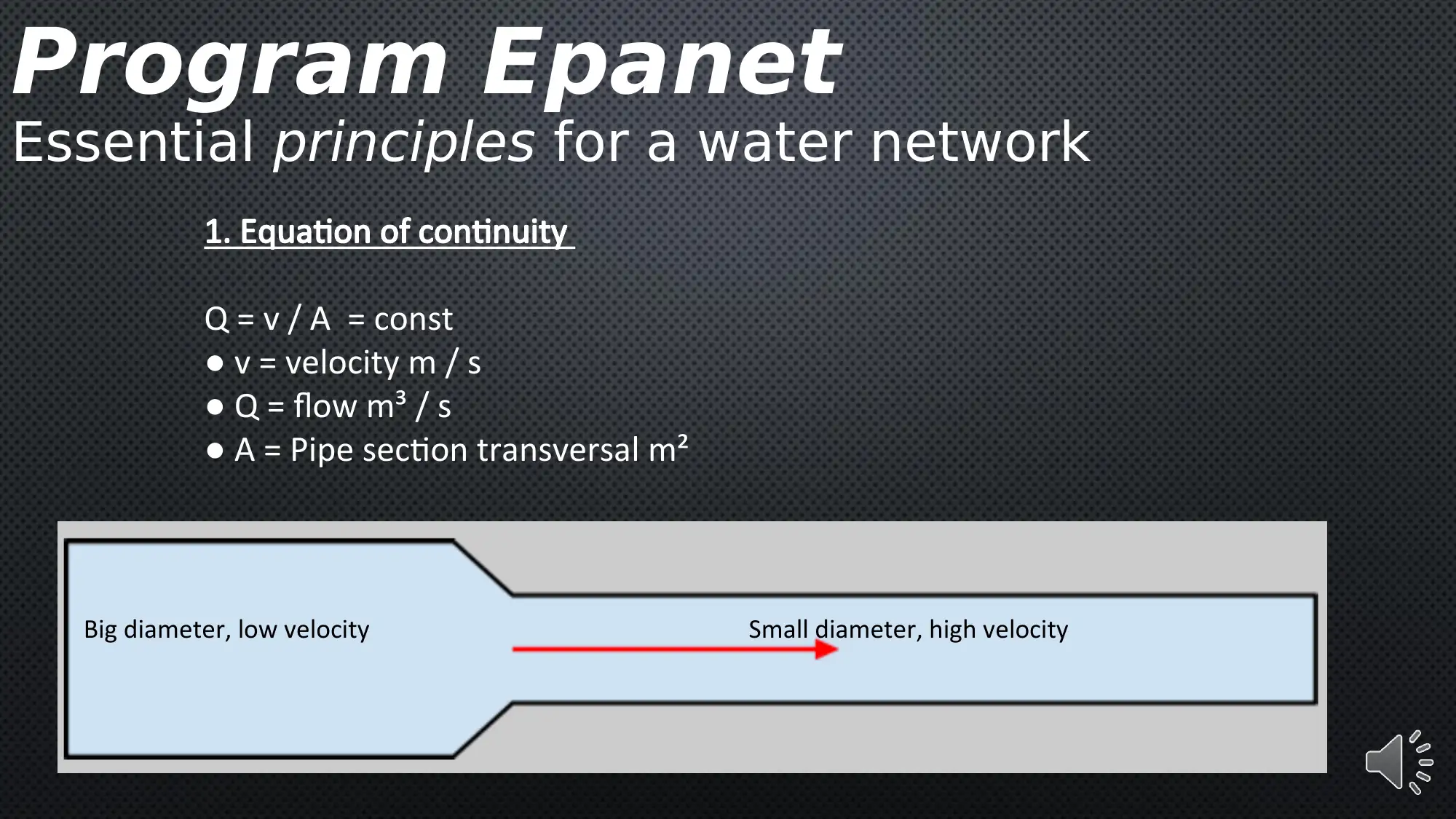

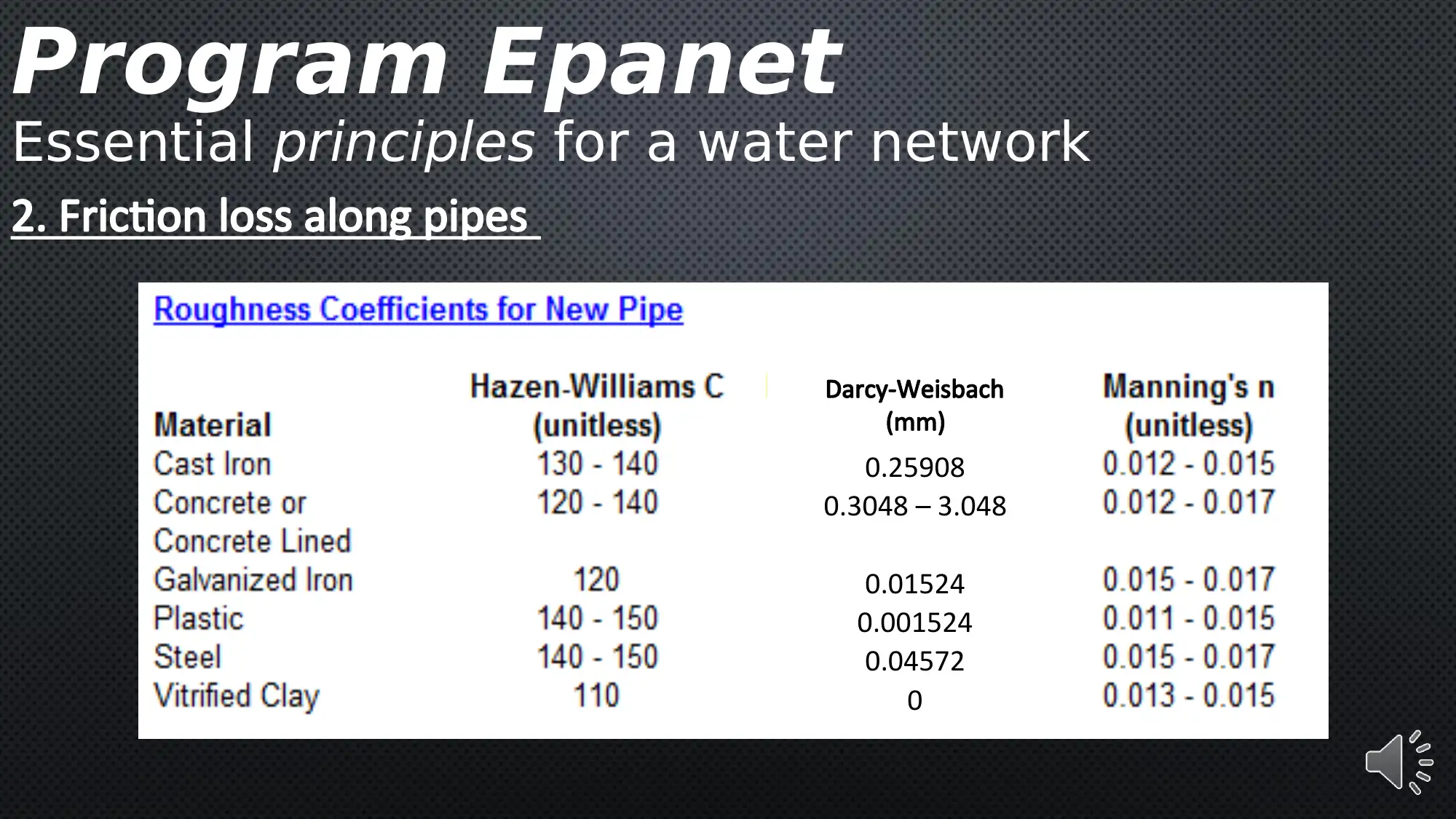
![[object Object]](/_next/static/media/star-bottom.7253800d.svg)